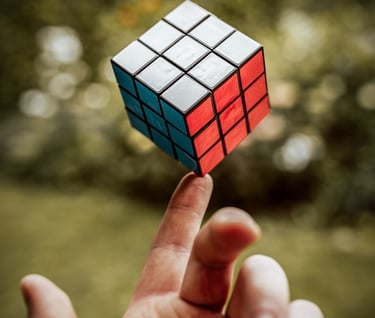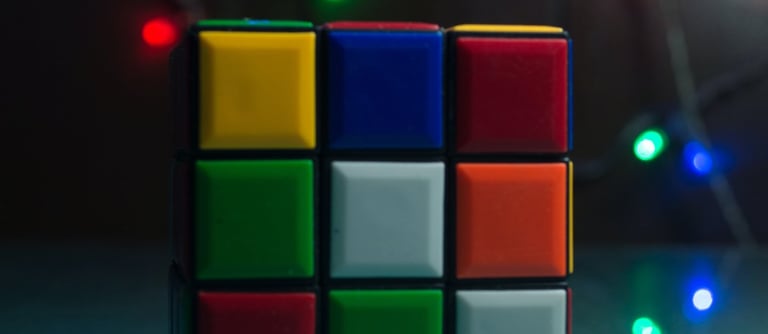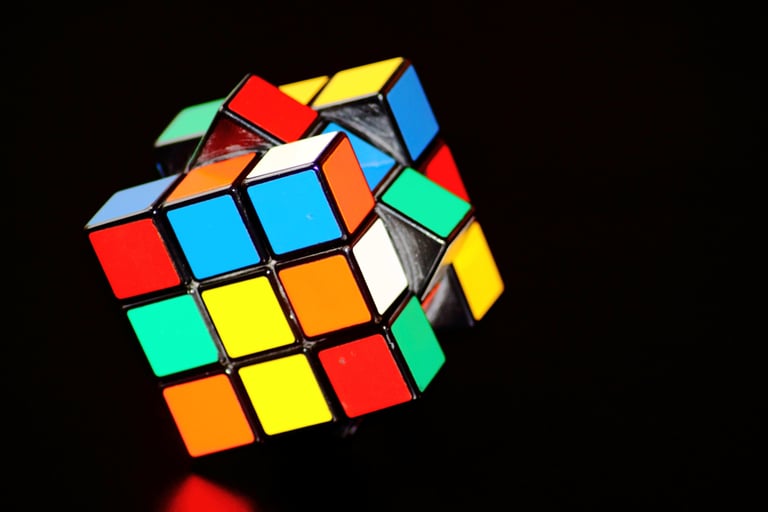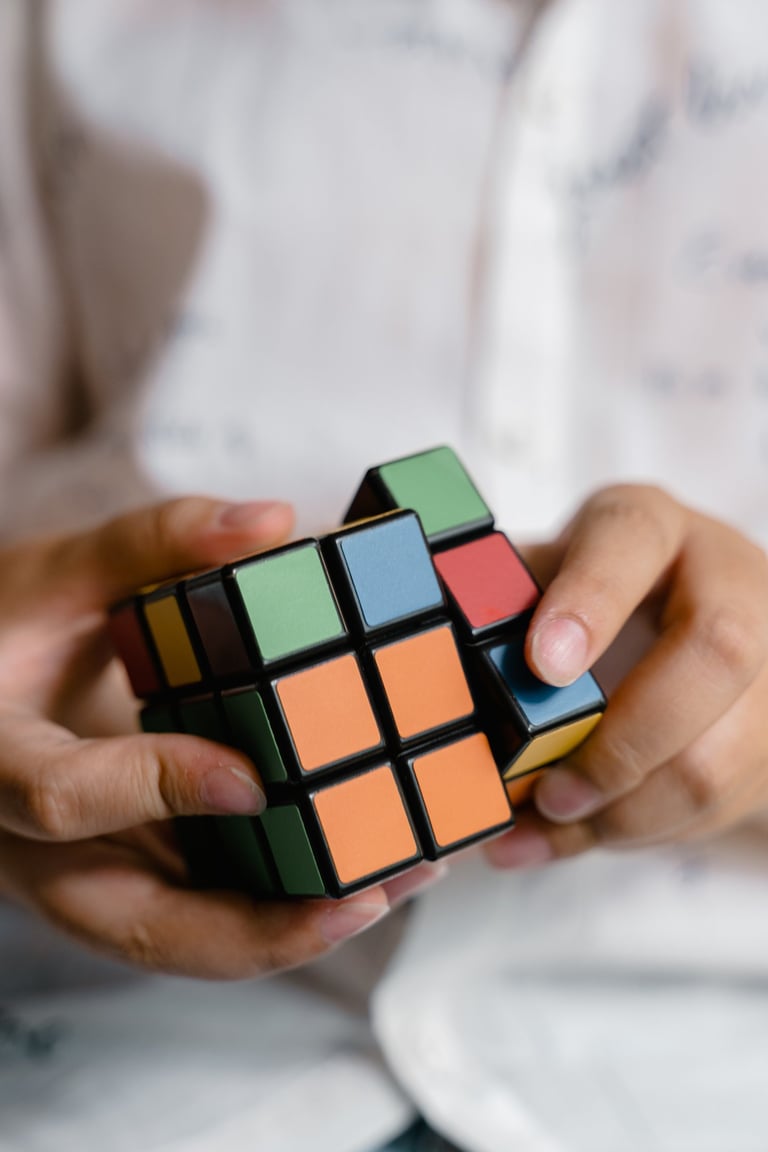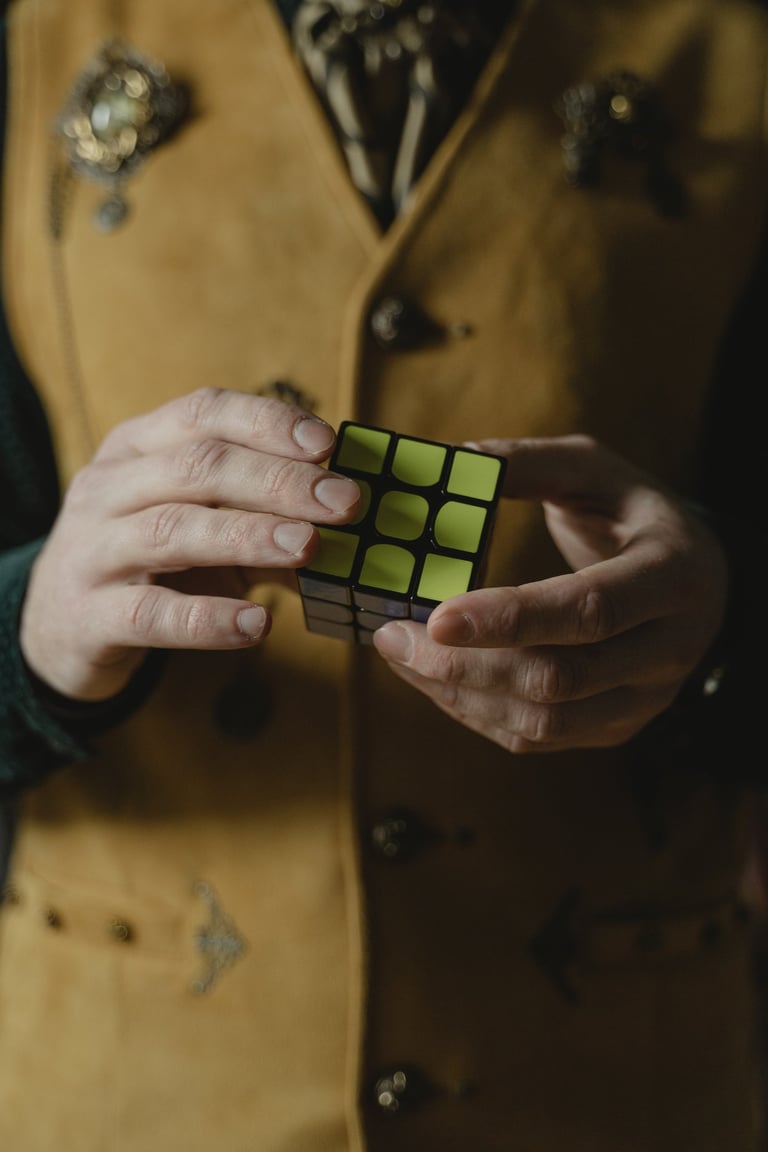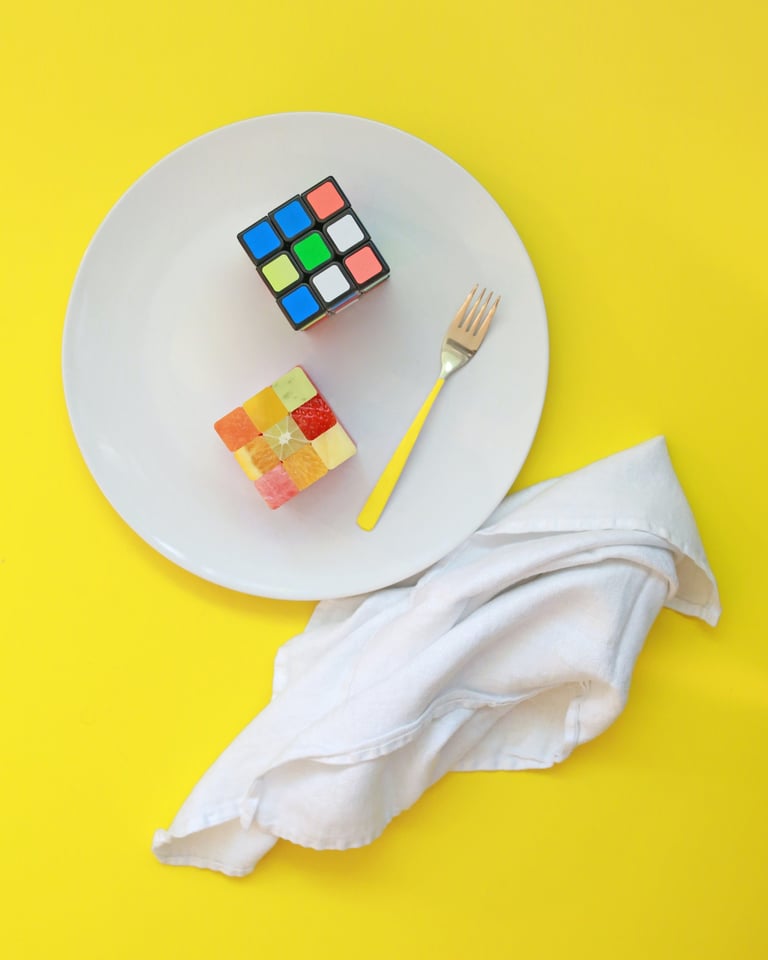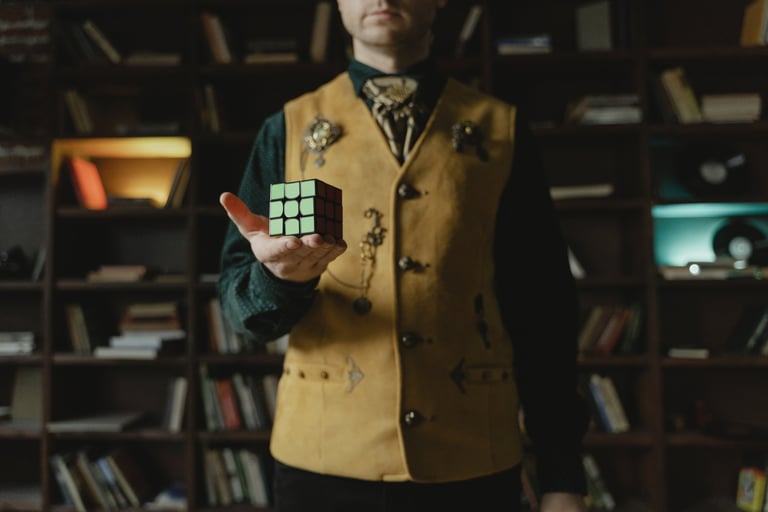Mastering the Rubik's Cube: A Comprehensive Guide to Solving It in Simple Steps
RECREATION
Step 1: Getting to Know Your Cube
Anatomy of the Cube
The Rubik's Cube consists of six faces, each adorned with a different color - white, yellow, orange, red, green, and blue. These faces are composed of smaller squares known as cubies. Understanding the structure of the cube is crucial for executing moves effectively.
Notation System
To communicate cube rotations, a standardized notation system is employed. This involves using letters to represent each face (U for Up, D for Down, L for Left, R for Right, F for Front, and B for Back) and modifiers like ' (apostrophe) for counterclockwise turns and 2 for 180-degree turns. This system forms the language of cube-solving.
Step 2: Solving the White Cross
Solving the White Center
Your journey begins with the white center. This square is immovable and serves as the anchor for the white face.
Placing White Edge Pieces
Identify the white edge pieces that have only one white sticker. These pieces will also possess two other colors. Match each white edge piece with the corresponding center of its color. Use a series of moves to position the white edge pieces around the white center.
Step 3: Completing the First Layer
Filling in the White Corners
Next, focus on the white corner pieces. These have three different colors. Align each corner piece with the white center and place it in its proper position. Execute a series of moves to slot the white corner pieces.
Solving the First Layer
With all white pieces correctly placed, ensure that the adjacent colors match. This marks the completion of the first layer, a significant milestone in your Rubik's Cube journey.
Step 4: Solving the Middle Layer
Positioning the Middle Layer Edges
Now, turn your attention to the middle layer edge pieces. These have two colors, excluding white. Match each edge piece with the center of its corresponding color. Execute a series of moves to slot the middle layer edge pieces.
Completing the Middle Layer
Once all middle layer edge pieces are correctly placed, ensure that the adjacent colors match. This signifies the successful completion of the second layer.
Step 5: The Yellow Cross
Achieving the Yellow Cross on Top
In this phase, invert the cube so that the white face is now at the bottom. Your objective is to create a yellow cross on the top face. Use the following sequence of moves:
F R U R' U' F'
Continue this sequence as needed to form the yellow cross.
Adjusting the Yellow Edges
With the yellow cross formed, you may notice that some of the yellow edge pieces are out of place or oriented incorrectly. Implement the following move to rectify their positions and orientations:
R U R' U R U2 R'
Continue this sequence as necessary to ensure all yellow edge pieces are properly aligned.
Step 6: Completing the Yellow Face
Orienting the Yellow Corners
Now that the yellow cross is in place, focus on the yellow corners. Execute the following move to orient the yellow corners correctly:
R U2 R' U' R U R' U' R U' R'
Continue this sequence as needed to ensure all yellow corners are correctly oriented.
Positioning the Yellow Corners
Once the yellow corners are oriented correctly, you may find that some of them are in the wrong position. Use the following move to adjust their positions:
U R U' L' U R' U' L
Repeat this sequence as necessary to position all yellow corners correctly.
Step 7: Advanced Techniques
F2L (First 2 Layers) Method
The F2L method is an advanced technique that allows for more efficient solving of the first two layers simultaneously. It involves pairing up edge and corner pieces and inserting them into their correct positions.
OLL (Orientation of Last Layer) and PLL (Permutation of Last Layer)
These advanced algorithms are used to orient and permute the last layer of the cube, resulting in a fully solved Rubik's Cube.
Step 8: Speedcubing Tips
Efficient Finger Techniques
Mastering finger techniques is crucial for speedcubing. Practice smooth, quick movements to minimize transition time between moves.
Recognizing Patterns Quickly
Speedcubing relies on pattern recognition. Train your brain to identify common cube configurations swiftly.
Step 9: Troubleshooting
Common Mistakes and How to Fix Them
Explore some of the common errors beginners encounter and learn how to rectify them effectively.
Tips for Maintaining Your Cube
Proper cube maintenance ensures smooth and efficient solving. Learn how to clean and lubricate your cube for optimal performance.
Step 10: Beyond the Basics
Blindfolded Solving
For the ultimate challenge, attempt to solve the Rubik's Cube blindfolded. This requires memorization, spatial awareness, and precise execution.
One-Handed Solving
Take your skills to the next level by attempting one-handed solving. This adds an extra layer of complexity and finesse to your cube-solving repertoire.
Step 11: Resources and Further Learning
Recommended Videos and Tutorials
Explore a curated list of videos and tutorials that provide additional guidance and tips for mastering the Rubik's Cube.
Online Communities and Forums
Connect with fellow cube enthusiasts in online communities and forums. Share your progress, seek advice, and engage in discussions about cube-solving techniques.
Conclusion
Solving the Rubik's Cube is a rewarding endeavor that sharpens your problem-solving skills, spatial awareness, and patience. With dedication, practice, and the right techniques, you can master this iconic puzzle. Remember, every solved cube is a testament to your persistence and determination.
I hope you find this blog post both comprehensive and engaging! Happy cubing!
Introduction
The Rubik's Cube is a timeless puzzle that has intrigued and captivated generations. Its colorful facade and complex structure might seem daunting at first, but with the right approach, solving it can become an achievable feat. In this comprehensive guide, we will break down the process into simple, manageable steps that will lead you to triumph over the cube.

